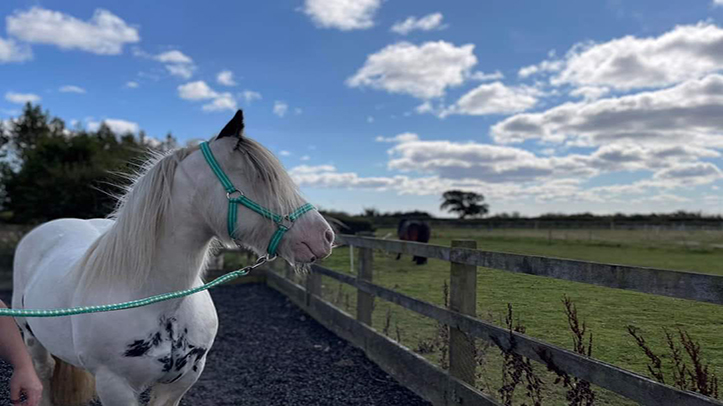In a case study, Claire Shand, director of marketing and communications at Westgate Laboratories, looks at approaching winter parasite control for a horse at low risk of parasite infection
Quartz is a healthy eight-year-old pony who was rehomed from World Horse Welfare earlier this year. He came to be a companion and lives with one other adult horse. The pair share a large field that is sectioned to allow for resting and rotating; it is also regularly poo picked. Quartz has worm egg count results from April, May, August and November this year, all of which show <50 e.p.g. no eggs seen in the sample. His EquiSal tapeworm tests are also low, no treatment needed.
With worm egg count results consistently less than 200 e.p.g. over the last year, combined with living in a closed herd with good paddock management, Quartz is considered low risk for parasite infection. However, he could still be carrying undetected encysted stages of the small redworm, which wouldn’t show up on a worm egg count and could be clinically significant.
A mass emergence of these has the potential to trigger larval cyathastominosis, a serious colic that is very difficult to treat and often fatal. We need to balance this risk with the need to reduce wormer use, slow the development of resistance and protect key medicines. Moxidectin being the preferred larvicidal treatment for small redworm, given the widespread resistance to fenbendazole.
It is very possible that a history of low worm egg counts may correlate with there being very few larval small redworm present to cause disease. One option in this circumstance would be to leave Quartz untreated, however, low risk doesn’t mean no risk.
Research shows that encysted redworm can stay inhibited in the gut wall for up to three years and infection leading to this could have occurred at any time during that period. With anecdotal reports of larval cyathastominosis on the rise, and with it, horse fatalities, is it worth taking a chance on?
Quartz fits the selection criteria for use of the small redworm blood test and so it was decided to test him. This is an ELISA that detects antibodies that the horse produces against small redworm. It can be carried out with a vet, the test itself being similar in price to the tapeworm test, with the cost variability coming in depending on callout and consultation services of your veterinary practice.
This test has the ability to detect all stages of the worm lifecycle in the horse, including the encysted larval phase. The test has high sensitivity and specificity, and the result comes as a serum score to give a probability of infection and, with veterinary interpretation, a decision on whether to treat or not.
Quartz’s blood sample was duly taken at the end of November and, rather surprisingly, returned a serum score of 35.25 indicating a high probability of small redworm infection >1,000 Total Worm Burden. Treatment with a larvicidal wormer (moxidectin) was therefore recommended.
For me, what Quartz’s case study highlights, is the need to be proactive about parasite control. It’s the old adage of knowledge is power, and diagnostic testing has a key role to play in supporting our parasite control decisions. Yes, this particular test adds cost to simply giving a wormer, but it helps to bring clarity to an area of horse health that’s sorely needed. Without it, the costs to horse health are arguably much greater. Every horse that can avoid having a moxidectin dose, is helping to preserve efficacy of the chemical and delaying resistance. Nevertheless, in my eyes it’s not worth doing so blindly and risking the consequences of a mass emergence.
If a horse is categorised as low risk for parasite infection and the owner is unable or unwilling to blood test for small redworm, then I would be suggesting a treatment this winter in line with advice for medium to high-risk horses.
The sensitivity of the small redworm blood test means it isn’t recommended for use in medium to high-risk horses. This is because the probability of them requiring treatment is so high. These horses are instead recommended a proactive winter treatment usually with moxidectin or in certain cases, where resistance status is known, a five-day fenbendazole treatment may also be considered.
My own horse Bertie does tend to be a higher egg shedder and so a worm egg count of 400 e.p.g. for him this summer makes him not a suitable candidate for the blood test and he will get a proactive dose of moxidectin. If we ever manage to be in the low-risk category I will certainly be looking to test first to determine if treatment is needed.
We have developed a handy flowchart to help you work through this decision-making process with horse owners. Available at: https://www.westgatelabs.co.uk/info-zone/seasonal-parasite-control/winter/.


